Flue Gas Desulfurization (FGD)
The Flue Gas Desulfurization (FGD) plant is designed to remove sulfur dioxides (SO2) from flue gas that is produced by boilers, furnaces, and other sources. Mitsubishi Power has developed a highly effective wet limestone-gypsum FGD process and seawater FGD process, both of which contribute significantly to the prevention of air pollution. These processes are capable of treating a wide range of SO2 concentrations, ensuring greater plant reliability and improved economics.
-
Maximum Capacity
1,050 MW
-
Maximum Inlet SO2 Concentration
80,000 mg/Nm3 (Coal Fired)
-
Maximum SO2 Removal Efficiency
99%
We have supplied more than 300 FGD plants worldwide and have acquired a larger market share by offering the following features:
- High SO2 removed efficiency meeting required emission standards for all kinds of fossil fuels
- Multiple pollutant control with associated environmental control equipment
- High reliability
- Energy and utility saving
Wet Limestone-Gypsum FGD Process
This Wet Limestone-Gypsum FGD process is suitable for large-scale flue gas treatment, can use a low-cost absorbent (limestone), and produces stable and valuable by-products (gypsum).A typical system flow is shown below.
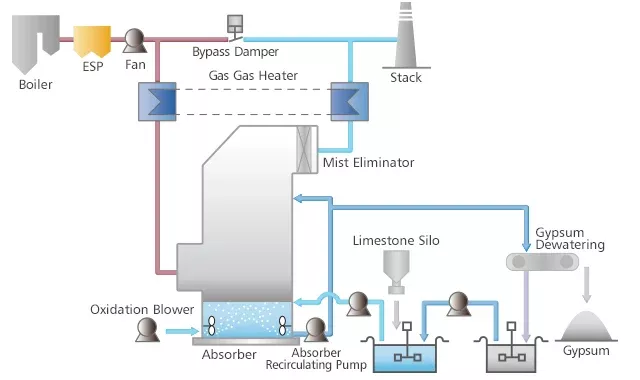
Scrubber Types
Mitsubishi Power offers two types of scrubbers: one is a double contact flow scrubber and the other is a spray tower scrubber. The optimal scrubber type is selected based on flue gas conditions, site layout, and other project specific factors.
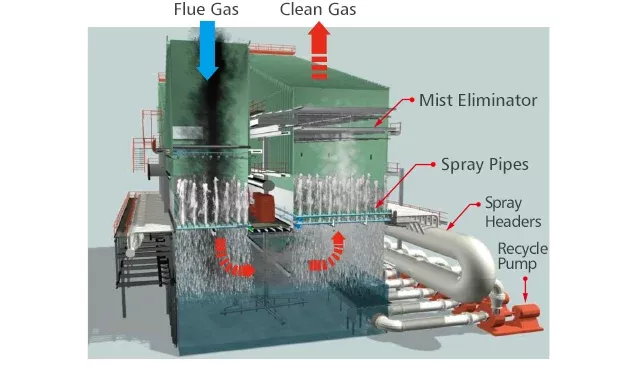
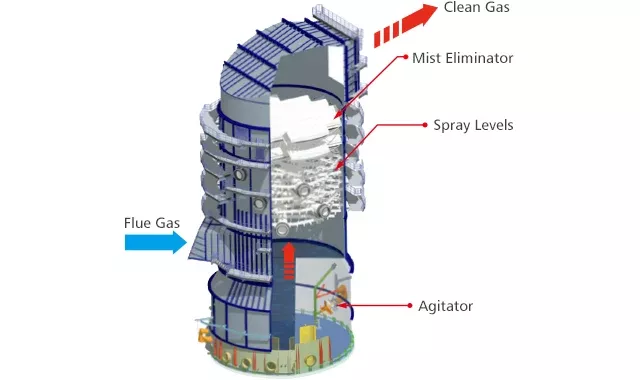
Seawater FGD Process
The Seawater FG process can be applied in regions with soft regulations on SO2 emissions and the initial cost is lower than the wet limestone-gypsum FGD process due to the simple equipment configuration.
A typical system flow is shown below.
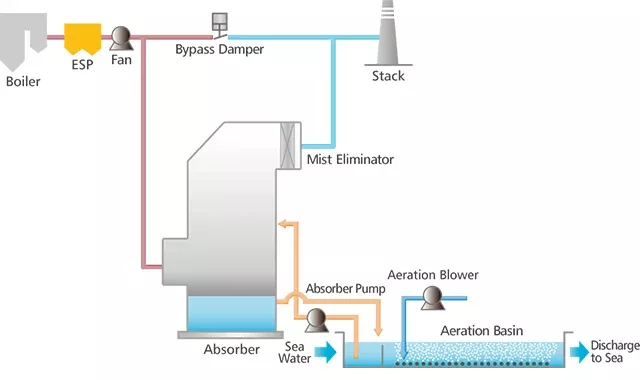
Major Components of Seawater FGD
The seawater Flue Gas Desulfurization (FGD) process has two main components: The Grid Tower Scrubber and the Aeration Basin. The Grid Tower Scrubber uses seawater to absorb SO2 from the flue gas while the Aeration Basin treats the SO2-rich seawater to make it suitable for discharge back into the sea.
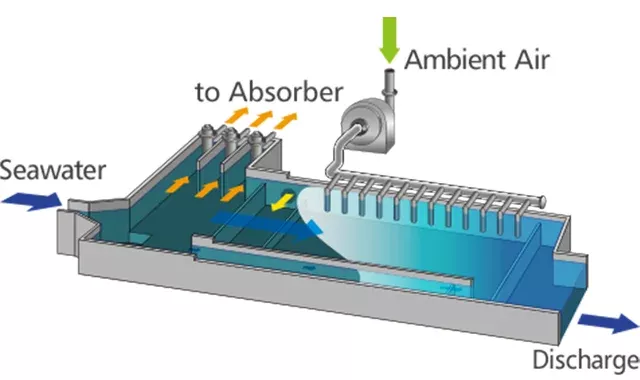
Contact Us
Want to learn more about Mitsubishi Power’s Emissions Controls products?
Connect With An Expert